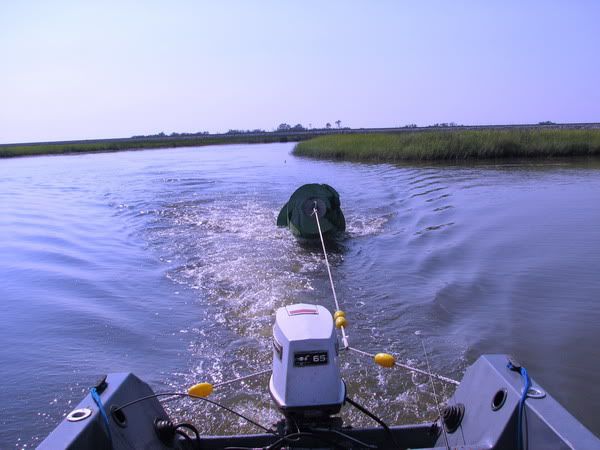jay_merrill
Vice Admiral
- Joined
- Dec 5, 2007
- Messages
- 5,653
Re: Do you stop to help stranded boaters?
There are cleats and there are cleats - some will handle the stress of towing and some won't. If in doubt, don't use them.
Generally speaking, stern eyes and bow eyes are the way to go. The hull thickness in the affected areas tends to be thicker and stronger than the deck positions that cleats are usually mounted on. Stern eyes and bow eyes are also usually backed better, which is an important consideration.
No matter what you are using as a towing point, don't try to tow the boat too fast. You may be sure of the strength of you own eyes, but the boat you are towing is often an unknown quantity. The worst scenario that you can run into, is to have the boweye or a cleat on the other boat give way. If you have excessive strain on the line, it will then recoil and whip towards you with a chunk of metal on the end. Simply put, if it hits you in the head, you may not live to tell about it.
Towing slowly will also prevent damage to your own motor, as well as minimize fuel consumption. Towing at 2,500 to 3,500 rpm, with a big bow wave in front of both your boat and the boating being towed, will cause high manifold pressure, alot of heat and stress on your motor, and high fuel consumption.
It doesn't take much hp to tow a boat through calm water at slow speeds. I have actually towed a 30 ft boat with a 15' trihull that had a pair of 6hp Johnsons on it. That is not something that I would normally attempt, but I found the guy caught up in a submerged gill net. He had two little boys with him on a fall day and the temperature was dropping rapidly, as the sun set. I cut him out of the net and then took him under tow to get him back to the ramp/harbor. We made all of about 2 knots, but I got them to safety.
In short, if you use common sense and a high level of attention to safety, you can get the job done in just about any situation.
There are cleats and there are cleats - some will handle the stress of towing and some won't. If in doubt, don't use them.
Generally speaking, stern eyes and bow eyes are the way to go. The hull thickness in the affected areas tends to be thicker and stronger than the deck positions that cleats are usually mounted on. Stern eyes and bow eyes are also usually backed better, which is an important consideration.
No matter what you are using as a towing point, don't try to tow the boat too fast. You may be sure of the strength of you own eyes, but the boat you are towing is often an unknown quantity. The worst scenario that you can run into, is to have the boweye or a cleat on the other boat give way. If you have excessive strain on the line, it will then recoil and whip towards you with a chunk of metal on the end. Simply put, if it hits you in the head, you may not live to tell about it.
Towing slowly will also prevent damage to your own motor, as well as minimize fuel consumption. Towing at 2,500 to 3,500 rpm, with a big bow wave in front of both your boat and the boating being towed, will cause high manifold pressure, alot of heat and stress on your motor, and high fuel consumption.
It doesn't take much hp to tow a boat through calm water at slow speeds. I have actually towed a 30 ft boat with a 15' trihull that had a pair of 6hp Johnsons on it. That is not something that I would normally attempt, but I found the guy caught up in a submerged gill net. He had two little boys with him on a fall day and the temperature was dropping rapidly, as the sun set. I cut him out of the net and then took him under tow to get him back to the ramp/harbor. We made all of about 2 knots, but I got them to safety.
In short, if you use common sense and a high level of attention to safety, you can get the job done in just about any situation.




















